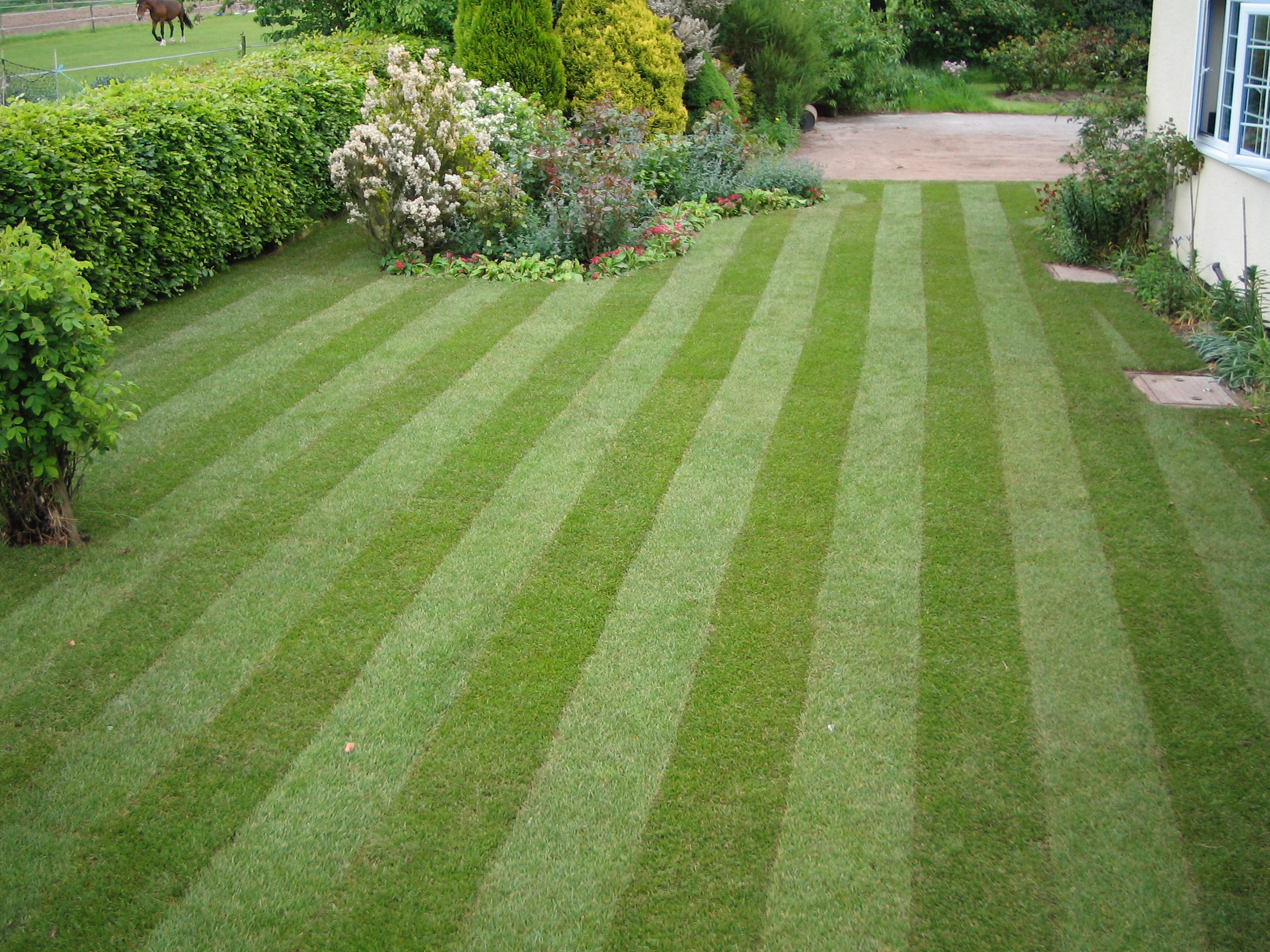
As part of our grounds maintenance service we can also offer tailored scarifying, moss treatment and weed and fertiliser treatments to keep your lawns and grassed areas looking their best all year round. We can as required scarify, aerate and top dress lawns to create a beautiful green space all Spring and Summer long. All treatments are carried out with industry leading equipment to ensure safe working practices.
Scarifiers can be used for a variety of functions from removing moss after it has been treated to reducing the density of coarser, unwanted grass weed species such as Yorkshire Fog or Tall Oat-grass. Broad-leaved species are more likely to be adversely affected by the vertical blade arrangement, making them a useful cultural tool by putting additional stress on broad-leaved weeds, although effective control can also be achieved through herbicides. Removing lateral growth with a scarifier will also encourage finer grasses and a more upright, tighter-knit sward.
When exactly should I scarify lawn?
There are two times of the year when it’s best to scarify your lawn:
* late spring (mid-April onwards)
* Autumn (September).
It is important not to do it too early in the spring as this can ruin your lawn. The perfect time for scarification is when the grass is growing strongly, avoiding early spring frosts. Ideally, the soil should be moderately wet but with a touch-dry surface. In late winter/early spring, we generally get some lovely warm days, and there is a temptation to scarify then. However, the grass is not yet growing rapidly, and the following days can often turn much cooler meaning that your lawn cannot recover.
For the best results, mow the lawn and apply a feed treatment before scarifying.
Weed and feed
We use a mini-granular formulation, that enables a rapid breakdown for an immediate and consistent response. The formula targets moss and also has two selective weedkillers. Providing control common turf weeds including Cat's Ear, Creeping Buttercup, Daisies and White Clover. Dandelions and Plantains are moderately susceptible. Resistant weeds are Common Bird's-Foot Trefoil, Field Woodrush and Mind-your-own-business.
Why apply weed and feed?
The treatment will provide a long lasting impact on your grass and with regular applications as per our guidelines your lawn will be thick, lush and green. The treatments we use provide a rapid response; the granulas will disperse in 4-5 days and the lawn will will look noticeably healthier in as little as two weeks. The special formulated treatment will also encourage harder growth and better root development. The formula also promotes even growth, quality and colour over the whole area and prevents the unsightly specking effects.
When to apply weed and feed?
In mid-spring; often late March to April, feeding the lawn will increase vigour and help prevent weeds and moss from establishing.
If grass loses its vigour and freshness the treatment should be reapplied in late September or early October as this will encourage strong root growth through the winter months and could help prevent damage by winter cold or pests and disease.
Over-seeding
After moss or weeds have been removed, or where grass is growing sparsely, over-seeding may be necessary. Early autumn is the best time for this job, but mid-spring is also suitable.






